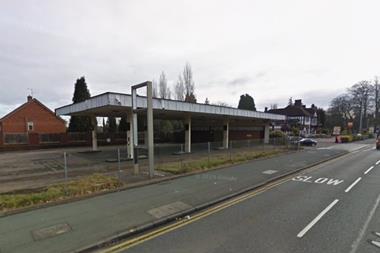Plenty of demand but not enough supply that seems to be the general opinion of experts on the current state of the forecourt property sector. And there are a wide variety of factors behind this situation.
Allen Shepherd, director of corporate retail at Christie & Co, says: "People have a huge appetite to acquire at the moment, even though their ability to buy is being dampened significantly by the banks." According to Shepherd, there is particular interest in the independent market, whether it’s a retailer with two or three sites looking to add another one or retailers with 10 or 20 sites aiming to increase their market share. "The large group operations are also looking to buy," he says. "However, although they’ve often got the money to hand, they mainly seem to be bargain hunting."
Mark Frostick, associate surveyor at Rapleys, says: "There’s still great demand but people are hanging on to the good sites, you’d only sell at the moment if you really had to. I’d advise retailers looking to sell to hang on for a couple of years if they can."
Adam Chapman, senior surveyor automotive and roadside at GVA Grimley, reckons that retailers who are considering a disposal, perhaps as part of a business strategy or even due to retirement, are in a difficult situation. He explains: "They will think a potential buyer would see it as a ’distress’ sale, that the property is only up for sale because the retailer is struggling to cope with the market conditions, and they’ll make discounted offers accordingly. Purchasers are looking for bargains at the moment. It’s a buyer’s market but in fairness there’s not a vast amount of supply out there because people don’t want to be seen to be selling just because they have to."
Experts say property prices are down on this time two years ago, but have shown signs of picking up over the past year and are expected to continue doing so. Chapman says: "Compared with other sectors, the fuel retailing sector has held up very well during the recession. We have seen very few insolvencies. Despite traffic volumes having fallen and people having less disposable income, somehow retailers have managed to remain in business. It certainly hasn’t been an easy time for retailers and they should be commended for their resolve.
"Forecourt property values are down from where they were in 2007, but arguably they were slightly inflated then certainly the majority of retailers didn’t perceive 2007 values to be sustainable. Prices probably peaked around mid-2007 but would then have fallen significantly. It’s impossible to comment accurately given that by December 2008 there were few (if any) transactions taking place in the forecourt property market. Over the last three to six months we’ve certainly seen a rise in interest (if not activity just yet) and I’d say prices have risen and are now at much more sensible, sustainable levels. We need to go one step at a time and be cautious but there’s plenty of room for optimism."
John Coulling, associate director at Lambert Smith Hampton, says: "While the industry went through a lot of ’pain’ in the wake of Esso’s 1996 Pricewatch Campaign, which indirectly led to the permanent closure of thousands of filling stations over the following 10 years, it has left the industry in a fairly robust condition. This is evidenced today by the fact that while other market sectors are still struggling in the aftermath of the banking crisis, the petrol station sector remains relatively buoyant with demand for sites still outstripping supply."
But the market is being affected by a lack of available credit. Shepherd explains: "The banks have changed their loan-to-value criteria so the cost of borrowing has gone up. The amount retailers can borrow is now less plus interest rates and fees are higher than they have been in the last few years."
In addition, if retailers do sell at this time, there is the problem of where to invest cash from the sale. With low interest rates on savings accounts plus a poor exchange rate and fewer people willing to risk the stock market, Shepherd reckons many retailers will stay in business until the economic situation improves. He says: "We’ve seen a lack of better quality sites coming to market because they’ll only get a very small return on their capital. These retailers are being forced to stay in business because of the return on investment."
Partly as a result of this the sector is seeing growth in the leasehold sector.
Adam Wadlow, partner at specialist fuel and automotive property advisers Barber Wadlow, says: "There has been increased demand for leasehold opportunities because of the lack of finance, which is a new characteristic for the sector. Around 25% of the UK petrol station network is leasehold but this reduces to one in 10 for independent dealer sites."
Shepherd says some retailers are going for leasehold with the option to buy the freehold in the future: "If a site is worth £1m, in the past a retailer would have needed £150,000-£200,000 and the bank would have lent the rest. But now a retailer needs about £350,000-£400,00 for a £1m site. So if they have £200,000 they can use that to pay for the leasehold. After a couple of years paying rent on the freehold they can approach the bank for a loan, saying it would be cheaper for them to buy the freehold."
Most estate agents agree the number of forecourt sales are down. Frostick says Rapleys sold about a dozen properties in the last year compared to between 20, 30 or even 40 in previous years.
Chapman says another trend is retailers considering new builds or recommissioning redundant sites. GVA Grimley has seen an increase in retailers looking at buying and re-opening sites, many of which were sold to residential developers for top end figures at the height of the market. Chapman says the value for the existing use as a forecourt could now potentially exceed alternative use value for the right site, and it’s likely a number of new or re-opened sites will come online when market conditions improve.
Meanwhile, Experian Catalist has introduced a new service aimed at buyers in the independent market a series of low cost pre-defined reports that allow retailers to quickly find details on any open site in the UK, its local competition and customers in the area. What’s different is that the company previously had no access to non-forecourt data now it can also look at the shop side. It can get information on competitors and the demographic of customers within five minutes’ drive previously only available within five miles. Population demographics can include the male/female percentage as well as age groups, income, ethnicity and expected population growth.
The reports can even show a breakdown by product range of local spend on food and non-alcoholic drinks compared to the region. The reports are described as "a series of standard pre-defined reports grouped together into five sets designed to address the dealer’s requirements".
Each report can also be bought separately. They are: Acquisition, Shop Redevelopment, Shop Re-evaluation, New ’Greenfield’ Site and Full Revelopment. Pack prices range from £600 to £2,700.
Arthur Renshaw, UK and Ireland manager at Experian Catalist, says: "These report sets have been developed from talking to dealers about what they want. More and more often it is about the shop side rather than the fuel side. All reports are available on a quick turnaround by email and require minimal information from the dealer typically all we need is the postcode and name of the site. Dealers shouldn’t base their decision solely on the report, they still need to go and see the site."
Finally, Wadlow says there are still some well-funded operators who see further growth potential in the sector. Certain groups have continued to add new sites to their networks in the past 12 months and there are new entrants breaking into the market.
He adds: "Operators are naturally focusing on the better performing sites, of which there is only a finite supply.
"Operators are actively seeking to enhance trading performance of sites and it can be expected that the value of the average dealer site will show an upward trend going forwards."



























No comments yet